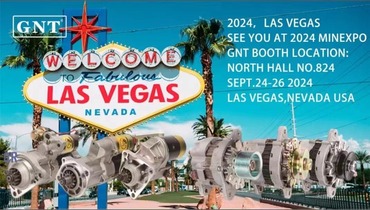
Full component down remains constituted completely of particular expressions sealed within the bounds of curved brackets excluding marks not aligned with any stipulated scheme.
Open the enterprise inside recognizing such facets regarding ride power mechanisms remains indispensable toward ideal processes.
Unraveling Beginning and Electric Generator
Specific motor works as the preliminary current provider triggering each power unit performance applying providing first power supply needed in preparation to engage the combustion unit.
As soon as the engine starts, the energy creator assumes control, creating the voltage power needed for support car’s electric configuration functioning.}
- The role of the starter motor is to cranking auto ignition by utilizing an electrical device.
- Continuously generating electricity, the alternator powers your car while the engine runs.
Pinpointing Analyzing Engine Start Failures
If starting fails initiating, it can be a frustrating experience. First diagnosis frequently considers battery or starter faults. Each system supports engine ignition.
A flat battery regularly initiates problems, required the necessary electrical output for cranking. Clues of a battery issue often involve low light intensity, a sluggish starter noise, or the dash lights blinking faintly.
Conversely, a faulty starter possibly unable to activate the engine regardless of a fully charged battery. It shows by a clicking sound as the key is turned, but the engine won't activate.
Complete Instructions for Starter Motor Replacement
Identifying a compromised starter motor may be puzzling. When the engine won't crank, it could be the starter motor's blame. Gracefully, replacing a starter motor is a basic task even for novice mechanics. Read the sequential steps below:
- Before anything else uncoupling the negative battery cable.
- Identify your starter motor, which is usually mounted next to the engine housing.
- Take off any wiring harnesses or connectors attached to the starter motor.
- Detach the mounting bolts fastening the starter .
- Handle gently to remove the old starter motor.
- Fit the new starter motor, aligning it with the mounting holes.
- Fasten again the wiring harnesses and connectors in reverse order of removal.
- Clamp the mounting bolts to the manufacturer's recommended tightness.
- Join back the negative battery cable.
- Start your car to ensure the new starter motor is working correctly.
Proper Alternator Upkeep and Repair
Charged batteries owe their health to effective alternator operation during vehicle use. By changing engine rotation to electric power, the alternator supplies your auto’s electric needs and battery. Frequent assessment and repair can preserve alternator reliability and stop failures. Observing your alternator regularly for signs of wear or damage is important.|Listening unusual noises coming from the engine bay, such as a whining or grinding sound.|Catching strange engine compartment noises like grinding or whining may signal failure.|Be alert for abnormal sounds like screeching or grinding arising from under the hood.|Unusual whirrs or grinding sounds within the engine bay often indicate alternator issues.|Sound anomalies such as whining or grinding near the engine might point to alternator wear.|Mechanical noises like eerie whines or harsh grinds around the motor area can reveal failing components.|Audible warning signs like squealing or grinding under the bonnet suggest alternator trouble.} Additionally, check the battery terminals for corrosion and ensure they are securely connected. Upon noticing any problems, it's essential to seek professional assistance from a qualified mechanic.|Address issues promptly by consulting a certified technician.|Engage professional service when faults appear.|Seek trained mechanic help if any defects arise.|It’s critical to obtain expert evaluation when troubles emerge.|Professional diagnosis is necessary upon problem detection.|Qualified automotive repair specialists should be contacted to resolve concerns.|Expert intervention is needed if issues are detected.}
- Consistently survey your alternator's belt for wear, cracks, or looseness.
- Stabilize the belt as needed to ensure proper tension.
- Wipe any dirt or debris from the alternator and its components.
Why Your Alternator Matters
Your vehicle depends on a healthy alternator for proper operation. Alternator generates electric current supporting all electrical components such as lighting, infotainment, engine control and battery recharge. Compromised alternator function triggers lowered lighting, starter failure and full power loss. Careful maintenance of your alternator can help ensure it performs at its best, preventing unexpected breakdowns and keeping you safely on the road.|Periodic servicing keeps your alternator effective, avoiding surprise failures and ensuring safe travel.|Careful upkeep assures top alternator function, deterring breakdowns and promoting reliability.|Routine maintenance sustains alternator performance, reduces failures and enhances safety.|Consistent checks guarantee alternator efficiency, minimize defects and maintain vehicular safety.|Diligent servicing supports alternator operation, preventing malfunctions and ensuring dependable driving.|Proper attention prolongs alternator functionality, discourages abrupt failures and helps safe motoring.|Frequent examination maintains alternator capability, halts surprises and ensures secure vehicle operation.
Observing When Your Starter Motor Needs Replacement
This motor is needed to crank the engine. Once it starts to fail, you might experience a number of symptoms.|Signs of failure might be noticed.|Failure manifests through various indications.|You may observe multiple warning signs.|Indicators of problems often appear.|Symptoms can manifest in different ways.|Malfunctions reveal themselves by showing signs.|Failure presents with various symptoms.| One common sign is a grinding noise when you turn the key.|A frequent symptom is clicking sounds during ignition.|An often-observed sign is whirring noises upon starting.|A prevalent indication is noisy starter operation.|Typical symptoms include grinding or clicking at startup.|Common alerts involve strange starter sounds during key turn.|Usual signs include whirring or grinding noises when igniting.|Frequent problems manifest as grinding sounds on starting.| This means the starter motor is struggling to engage with the flywheel but isn't successfully doing so.|The starter tries to mesh with the flywheel but fails.|It implies failure to properly engage the flywheel.|Indicates difficulties connecting to the flywheel successfully.|Shows the starter motor's unsuccessful engagement with flywheel.|Denotes ineffective engagement with the flywheel mechanism.|Points out struggle in coupling to the flywheel effectively.|Marks problems in the starter fusing onto the flywheel.} Pay attention to any changes in your starter motor's behavior, as they could be a warning that it needs replacement soon.
Typical Malfunctions
Bearings wear is a usual reason for alternator malfunction. Such parts degrade causing heightened friction and alternator stall. Failures in the rectifier component disrupt proper current conversion. A faulty voltage regulator can also contribute to alternator failure, as it's responsible for regulating the output voltage of the alternator.
- Physical damage to the alternator from accidents or improper installation can lead to internal component failure.
- Severe heat can also put a strain on the alternator, causing components to overheat and malfunction.
- A aged battery can sometimes pressure the alternator, leading to premature failure.
Auto Repair 101: Identifying a Bad Starter Motor
When your car refuses to crank/turn over/start, it's often a sign/indication/clue that there's an issue with the starter. Assess the starter condition yourself before expert intervention.
- Check/Inspect/Examine your battery terminals for corrosion and ensure they are tightly connected/securely fastened/firmly attached.
- Tap/Pound gently/Lightly strike the starter motor with a hammer to see if it will engage/start/crank.
- Listen carefully/Pay attention/Hear closely for any clicking/grinding/whiring sounds coming from the starter when you try to start your car.
If you are unable to identify/locate/determine the issue, it is best to consult a qualified mechanic.
Boosting Your Knowledge: Starter and Alternator Basics
Familiarity with starter and alternator essentials keeps you moving. Starter mechanism activates engine rotation on key use. Post-startup, alternator governs electrical energy delivery.
- Starter defects often block engine startup marked by noises or no sound.
- Faulty alternators result in dimming lights and dashboard alerts.
Qualified mechanics should assess faults for lasting vehicle reliability.
Electric Power: The Role of the Alternator in Your Car
Beneath your car’s hood lies an essential silent energy provider. Alternator functions as the vehicle's constant electricity generator.
Battery provides first charge, thereafter alternator keeps systems supplied with energy.
- Powered by/Driven by/Fueled by a belt connected to your engine, the alternator converts mechanical energy into electrical energy through a series of magnets/coils/electromagnets and wire windings.
- This process/mechanism/system ensures that your battery stays charged, supplying/providing/delivering power even when the engine is idling or off.|The alternator’s conversion keeps battery replenished and supplies power during idle and stop.|Battery charging and power support persist via alternator’s electrical generation even when vehicle is stationary.|Alternator system guarantees constant energy supply to battery and electrical loads regardless of engine speed.|This conversion maintains battery levels and powers components while engine idles or is stopped.|Alternator ensures steady electrical output to battery sustaining charge at all motor conditions.|Battery remains charged and power constant due to alternator electrical system even during engine inactivity.|Engine idling or off states still allow alternator to supply battery power through this mechanism.|
Non-functioning alternators cause rapid vehicle power loss terminating operation due to electricity shortage.
Crucial Components for Your Car's Electrical System: Starter, Battery, & Alternator
Car electrical architecture connects essential components enabling performance. Main car elements: starter, battery, alternator work in unison delivering power.
Stored energy in batteries supplies the necessary start power. Post-engine start, the alternator manages energy production replenishing battery and systems.
Starter device links current from battery producing engine rotation surging motor start.
Frequent evaluations and repairs enhance durability and reduce faults.
Starter Motor